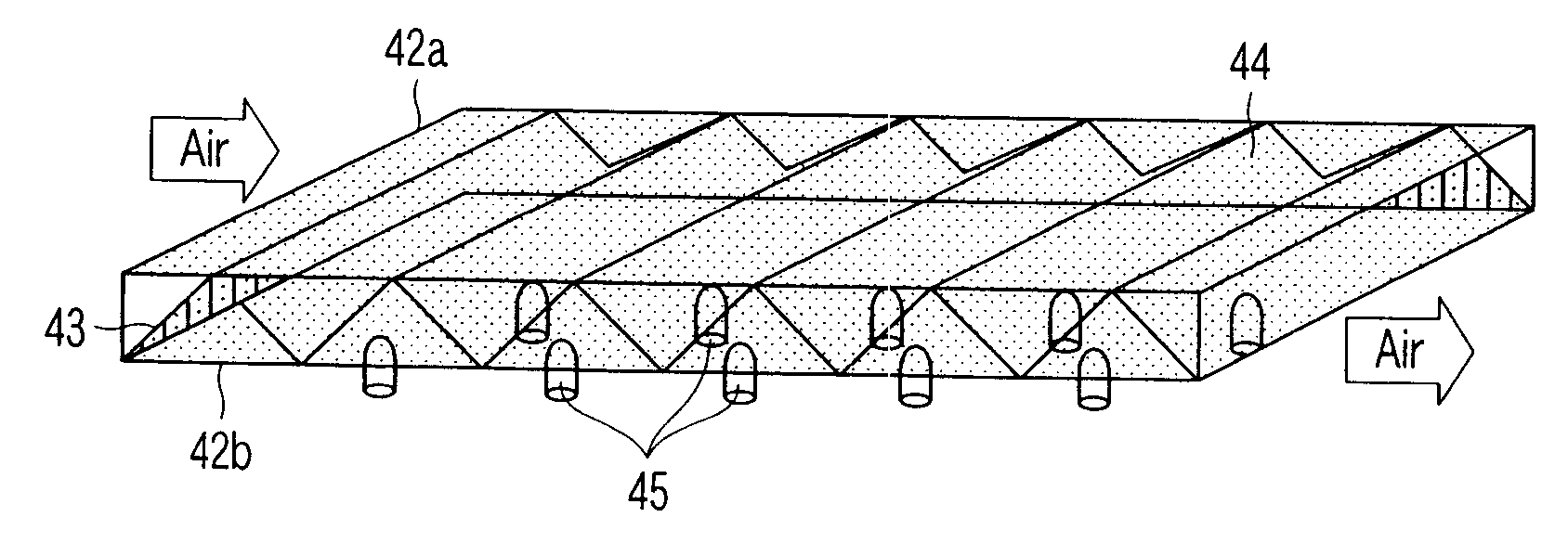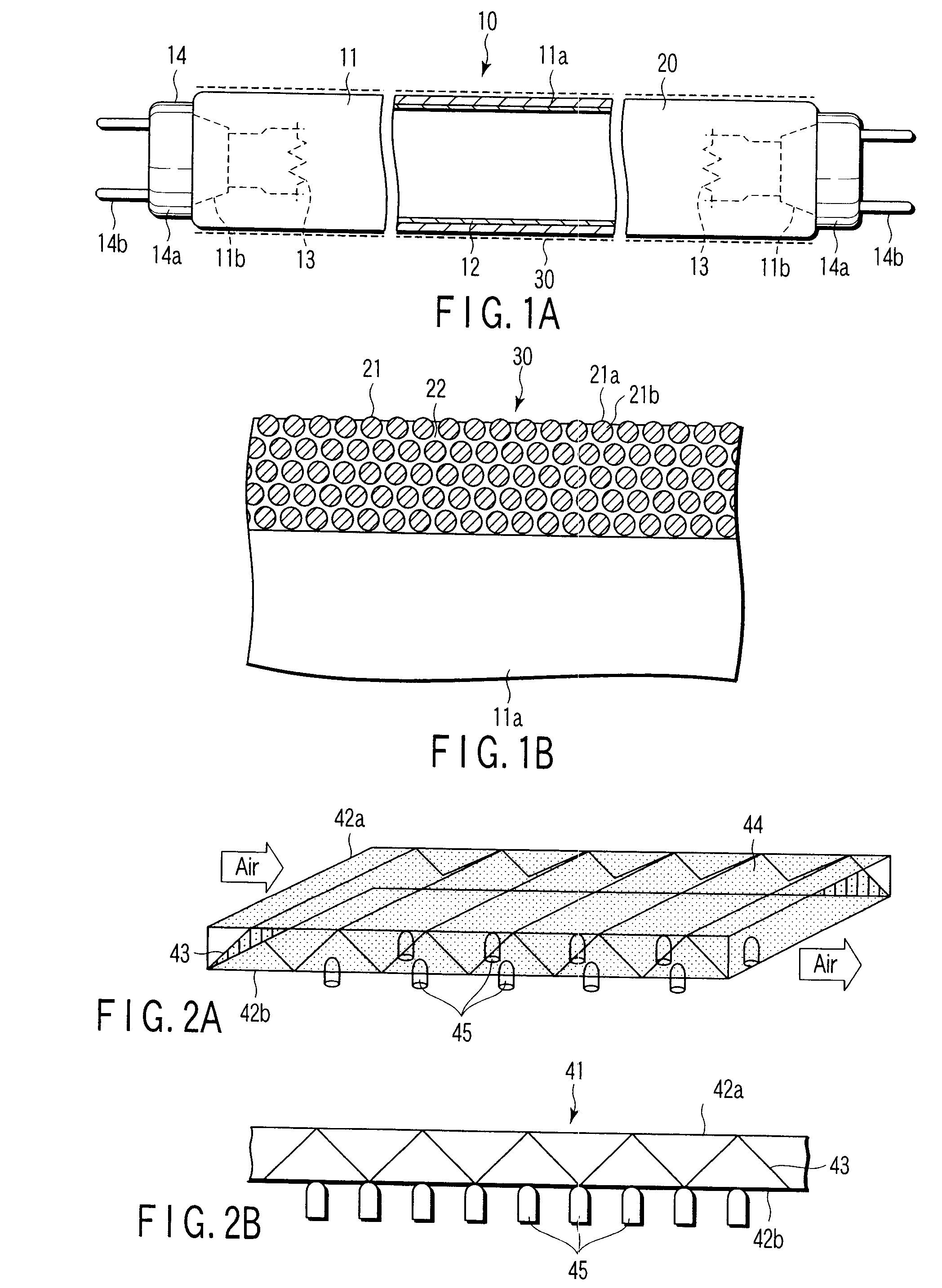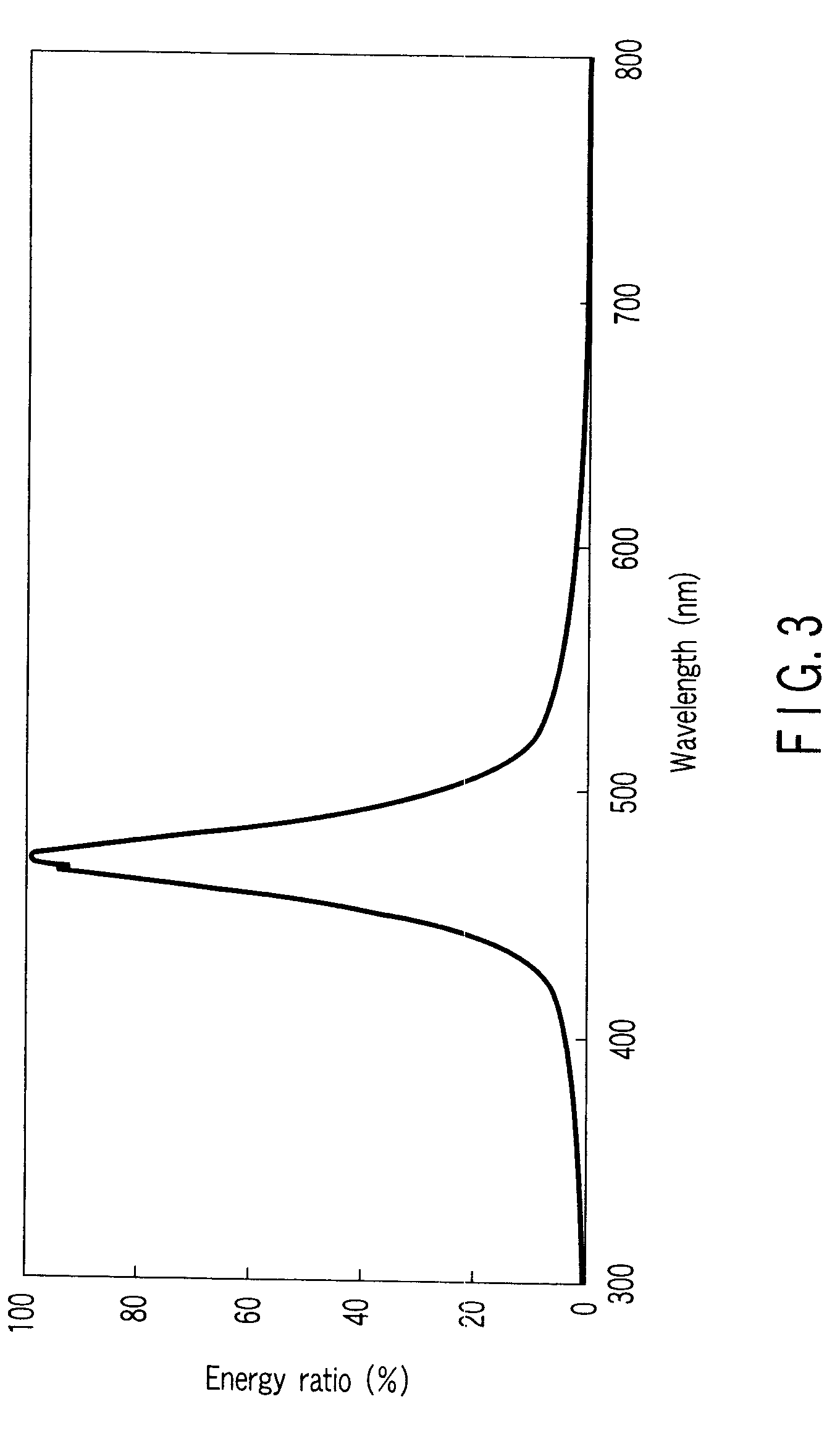Photocatalytic material, photocatalyst, photocatalytic product, lighting apparatus, and method of producing photocatalytic material
a photocatalytic and material technology, applied in the field of photocatalytic materials, can solve the problems of insufficient photocatalytic function under indoor illumination light, inability to achieve sufficient function, and inability to meet the requirements of indoor illumination light, etc., and achieve the effect of high catalytic
- Summary
- Abstract
- Description
- Claims
- Application Information
AI Technical Summary
Benefits of technology
Problems solved by technology
Method used
Image
Examples
first embodiment
[0072]A photocatalyst powder according to the first embodiment was produced as follows.
[0073]At first, ammonium para-tungstate (APT) was crushed by a bead mill or a planetary mill and classified by centrifugation. Next, the obtained fine particles were heated at 400 to 600° C. in atmospheric air to refine a photocatalyst powder of tungsten trioxide fine particles having a crystal structure of the monoclinic crystal system.
[0074]In the first embodiment, the heating treatment at about 500° C. in atmospheric air gave tungsten trioxide fine particles having an average particle diameter of about 0.1 μm and the monoclinic crystal system. The particle size distribution data in this step is as shown in FIGS. 8 and 9. Herein, FIG. 8 shows the particle size distribution (the relation among the particle diameter, the frequency and the integrated penetration) after dispersion. FIG. 9 shows the particle size distribution (the relation among the particle diameter, the frequency and the integrated...
second embodiment
[0076]A photocatalyst coating material for indoor according to a second embodiment was produced as follows.
[0077]At first, tungsten trioxide fine particles and a trace amount of a surface treatment agent were mixed with an organic solvent (ethyl alcohol) and dispersed for several hours by a bead mill. Successively, an inorganic binder (polysiloxane) in an amount of 30% by weight to the tungsten trioxide fine particles, an organic solvent (alcohol), and pure water in an amount of several % were added and again the dispersion treatment was carried out to obtain the photocatalyst coating material. After that, calcium carbonate and magnesium hydroxide in amounts changed in a range of 0.1 to 10% by mole on the basis of the tungsten trioxide were added to the obtained photocatalyst coating material and stirred to obtain samples. Next, the samples were applied to glass plates, acrylic plates, and fluorescent lamp glass tubes and then dried at 120 to 180° C. to produce coating samples.
[0078...
third embodiment
[0080]At first, an aqueous solution (sample) containing 4% by weight of ammonium para-tungstate was sent to the inside of a spraying nozzle 53 shown in FIG. 7. Next, the solution was sprayed through the tip end of the spraying nozzle 53 in hot air-blowing atmosphere at 200° C. to atomize particles with a particle diameter of 1 to 10 μm and obtained a granular raw material. In this case, compressed air was sent to the periphery of the tip end of the spraying nozzle 53 from a pipe 55a to supply oxygen to the photocatalyst fine particles sprayed by the spraying nozzle 53. If the concentration of the aqueous solution is 4% by weight, a granular raw material of ammonium para-tungstate with 40 to 400 nm can be obtained. Next, rapid and short time heating under conditions of 800° C. for 1 to 10 minutes was carried out in the drying chamber 51 to forcibly dry the above-mentioned raw material and re-crystallized the material. As a result, tungsten trioxide photocatalyst fine particles contai...
PUM
| Property | Measurement | Unit |
|---|---|---|
| Temperature | aaaaa | aaaaa |
| Temperature | aaaaa | aaaaa |
| Time | aaaaa | aaaaa |
Abstract
Description
Claims
Application Information
 Login to View More
Login to View More - R&D
- Intellectual Property
- Life Sciences
- Materials
- Tech Scout
- Unparalleled Data Quality
- Higher Quality Content
- 60% Fewer Hallucinations
Browse by: Latest US Patents, China's latest patents, Technical Efficacy Thesaurus, Application Domain, Technology Topic, Popular Technical Reports.
© 2025 PatSnap. All rights reserved.Legal|Privacy policy|Modern Slavery Act Transparency Statement|Sitemap|About US| Contact US: help@patsnap.com



